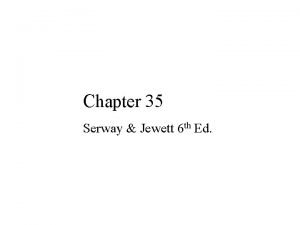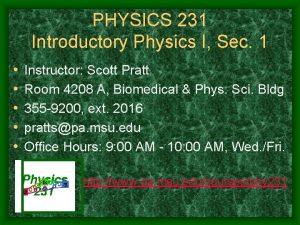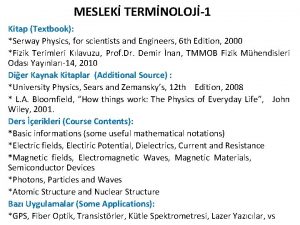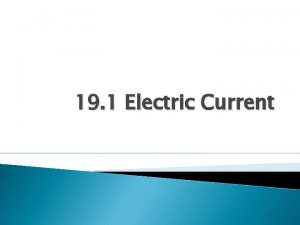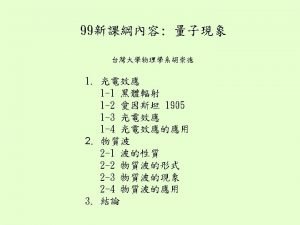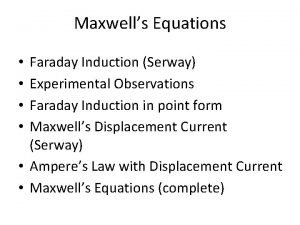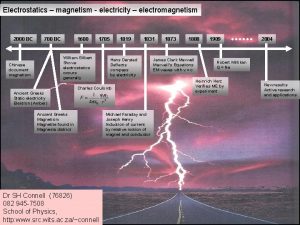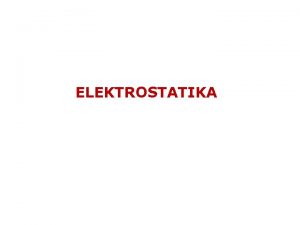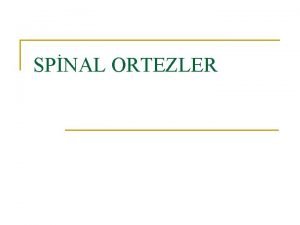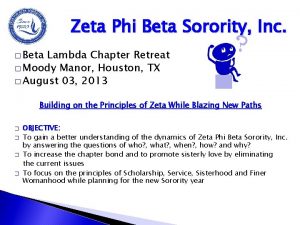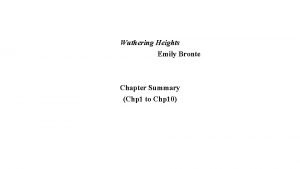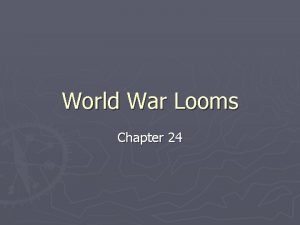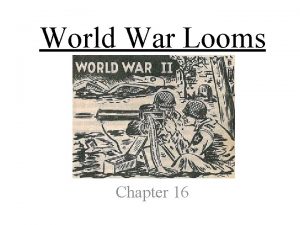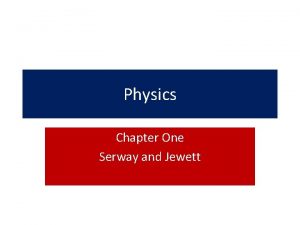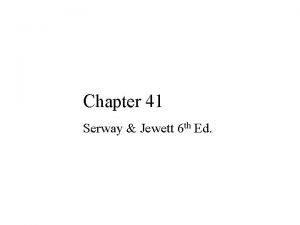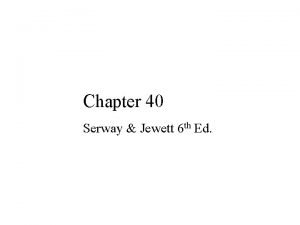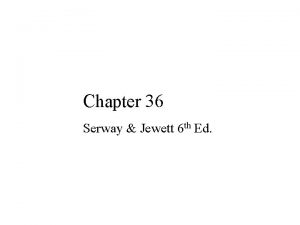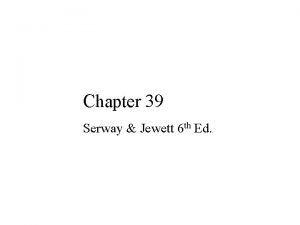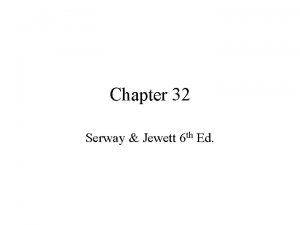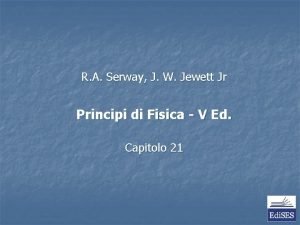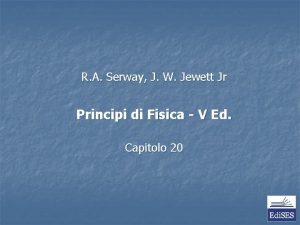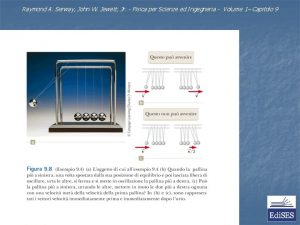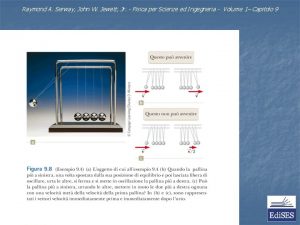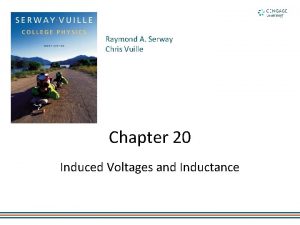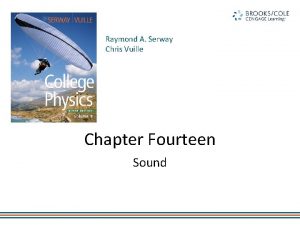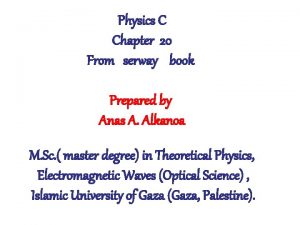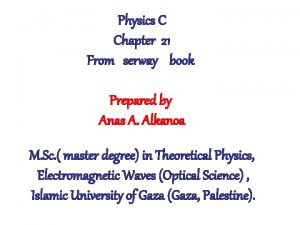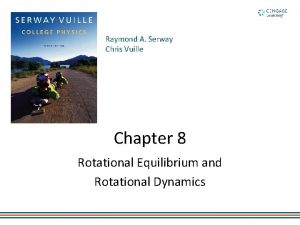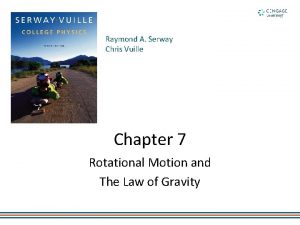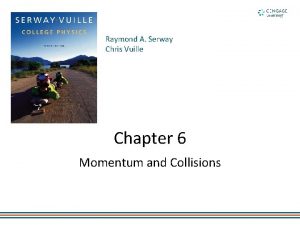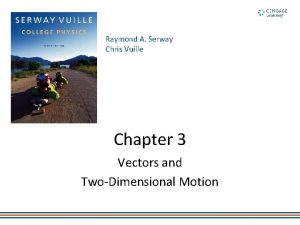Chapter 35 Serway Jewett 6 th Ed How




































- Slides: 36

Chapter 35 Serway & Jewett 6 th Ed.

How to View Light As a Ray As a Wave As a Particle

What happens to a plane wave passing through an aperture? Point Source Generates spherical Waves The limit of geometric (ray) optics, valid for lenses, mirrors, etc.

y { } E Eo cos (kx - t) Bo x B z Surface of constant phase For fixed t, when kx = constant

Index of Refraction 1 n 1 = 2 n 2


When material absorbs light at a particular frequency, the index of refraction can become smaller than 1!


Reflection and Refraction

Oct. 18, 2004

Fundamental Rules for Reflection and Refraction in the limit of Ray Optics 1. Huygens’s Principle 2. Fermat’s Principle 3. Electromagnetic Wave Boundary Conditions

Huygens’s Principle

Huygens’s Principle All points on a wave front act as new sources for the production of spherical secondary waves k Fig 35 -17 a, p. 1108

Reflection According to Huygens Incoming ray Outgoing ray Side-Side AA’C ADC 1 = 1’

Refraction

Fig 35 -19, p. 1109

Show via Huygens’s Principle Snell’s Law v 1 = c in medium n 1=1 and v 2 = c/n 2 in medium n 2 > 1.

Fundamental Rules for Reflection and Refraction in the limit of Ray Optics ü Huygens’s Principle 2. Fermat’s Principle 3. Electromagnetic Wave Boundary Conditions

Fermat’s Principle and Reflection A light ray traveling from one fixed point to another will follow a path such that the time required is an extreme point – either a maximum or a minimum.

Fig 35 -31, p. 1115

Rules for Reflection and Refraction n 1 sin 1 = n 2 sin 2 Snell’s Law

Optical Path Length (OPL) n=1 n>1 L L S P When n constant, OPL = n geometric length. For n = 1. 5, OPL is 50% larger than L

Fermat’s Principle, Revisited A ray of light in going from point S to point P will travel an optical path (OPL) that minimizes the OPL. That is, it is stationary with respect to variations in the OPL.

Fundamental Rules for Reflection and Refraction in the limit of Ray Optics ü Huygens’s Principle 1. Fermat’s Principle 3. Electromagnetic Wave Boundary Conditions

ki = (ki, x, ki, y) kr = (kr, x, kr, y) kt = (kt, x, kt, y)

Fig 35 -22, p. 1110


Fig 35 -25, p. 1111

Fig 35 -24, p. 1110

Fig 35 -23, p. 1110

Total Internal Reflection

Total Internal Reflection

p. 1114

p. 1114

Fig 35 -30, p. 1114

Fig 35 -29, p. 1114
 Serway
Serway Serway
Serway Serway textbook
Serway textbook Serway
Serway Serway
Serway Faraday's law
Faraday's law Serway
Serway Kvantiziranost naboja
Kvantiziranost naboja Yale ortezi
Yale ortezi Braddom's physical medicine and rehabilitation
Braddom's physical medicine and rehabilitation Andy stirred 100 grams of salt
Andy stirred 100 grams of salt Red tent summary
Red tent summary The great gatsby summary chapter 8
The great gatsby summary chapter 8 Chapter 10 chemical reactions
Chapter 10 chemical reactions Chapter 11 study guide stoichiometry
Chapter 11 study guide stoichiometry Chapter 9 chemical reactions study guide
Chapter 9 chemical reactions study guide Chapter 7 similarity
Chapter 7 similarity Chapter 6 career readiness chapter review answers
Chapter 6 career readiness chapter review answers Chapter 7 ionic and metallic bonding chapter answer key
Chapter 7 ionic and metallic bonding chapter answer key Chapter 9 surface water chapter assessment answer key
Chapter 9 surface water chapter assessment answer key Chapter 2 chapter assessment representing motion
Chapter 2 chapter assessment representing motion Chemistry: the central science chapter 14 answers
Chemistry: the central science chapter 14 answers Chapter 7 ionic and metallic bonding answer key
Chapter 7 ionic and metallic bonding answer key Population ecology section 1 population dynamics answer key
Population ecology section 1 population dynamics answer key Chapter 2 chapter assessment
Chapter 2 chapter assessment Introduction to the book of philippians
Introduction to the book of philippians Ionic compounds
Ionic compounds Chemistry chapter 7 ionic and metallic bonding
Chemistry chapter 7 ionic and metallic bonding 9 chemical names and formulas
9 chemical names and formulas Zeta phi beta shield meaning
Zeta phi beta shield meaning Working with young children/answer key chapter 1
Working with young children/answer key chapter 1 Chapter wise summary of wuthering heights
Chapter wise summary of wuthering heights Chapter 6 wuthering heights
Chapter 6 wuthering heights Qualitative paper example
Qualitative paper example Building vocabulary world war looms
Building vocabulary world war looms Chapter 16 building vocabulary world war looms
Chapter 16 building vocabulary world war looms Chapter 27 world war 1 and the russian revolution
Chapter 27 world war 1 and the russian revolution
